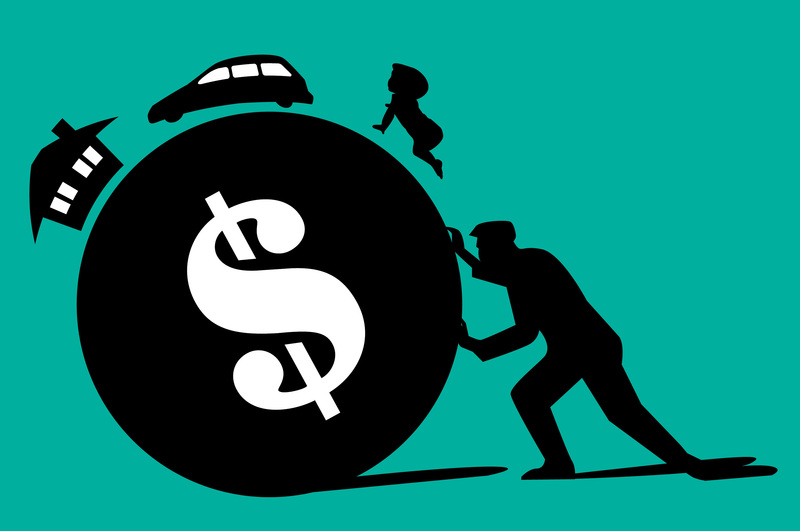Debt is an extremely scary word in today’s age, where the bankruptcy age group is becoming lower and lower. People accumulate debt younger and younger nowadays, with purchases of properties, cars and other luxury items. But what many people do not understand is that there are many forms of debt - it only depends on how you accumulated your debt and how you utilise the assets you acquired from your debt.

So lets take a look at an example of bad debt.
Poor Debt
Poor debt is unfortunately the most common debt that people typically acquire - usually the moment they come out from university before their 30s. The excuses you hear is that the economy is not good, their income is not high enough, everything is getting more expensive and they cannot cover their monthly costs.
But curiously enough if you look at the bank statements of these people, you will notice that many of the purchases on their credit cards are luxury items that are unnecessary; like perhaps the latest release of smartphone or expensive dinners out every weekend. The sad thing about these habits is that their spendings will only get them into deeper debt.

A study showed that an average of 40% of credit card users never pay their credit card bills in full every month, which 10 years ago was only 25%. And the annual interest on the balance of the credit card is as high as 18%.
To make matters worse, personal loans are getting more and more popular these days as many people are attracted by the thought of getting their hands on large amounts of cash easily. What they do not realise is that this money which they probably use to enjoy themselves for a very short period of time will draw them into an even deeper debt for the next 5 to 7 years.
Credit card and personal loans carry some of the highest interest rates in the market, with the former between 15% to 18% per annum and the latter 16% to 24% per annum. Car loans only have an interest rate of about 7% to 8% per annum and mortgage loans between 4.5% and 5% per annum.
If you look carefully at the numbers, this is the reason why people with credit card and personal loan debts keep getting deeper and deeper into debt. Their income is insufficient to cover their debts, they get into deeper debt on a monthly basis, larger debts are ignored while they spend on ‘cheaper’ luxury items which depreciate in value with time, they get into an even deeper debt - and the cycle continues.

Poor debt is a depressing story indeed. So let’s now look at Rich Debts that will benefit you.
Rich Debt
First of all, ‘rich debt’ is a foreign concept for many people. How can debts actually make you rich? Let’s look at an example.
Example 1
Kate bought RM1 million of assets in form of property. She had the cash to pay for it in full, but took a 90% loan instead. So she only paid RM100,000 from her own cash, and sold her property for RM1.2 million 3 years later. So she made RM200,000 from her investment of RM100,000.
Example 2
Tommy bought RM1 million of asset in form of property. He had the cash to pay for it in full, hence he did so. Three years down the line, he sold his property for RM1.2 million. He hence used RM1 million to earn RM200,000.
If you can see the two examples above, both of them made an investment, but one made RM200,000 with only RM100,000 whilst the other made the same amount but with RM1 million instead. Doesn’t the first example make more sense?

Understanding Leveraging
A simple explanation of leveraging, is using borrowed money to make more money. Leveraging is usually done in form of property investment, because your loan is secured against your property which increases in value over time.
But what about the property instalments? Are they considered bad debt? In a way yes, they are. But you can look at it as a form of ‘savings’, as when you sell your asset, you will be gaining back so much more.
Leveraging is also good because it will not require you to come out with a great lump sum of money, which will in turn leave you with extra cash in case of rainy days. Aside from being a form of security, this stash of cash also carries an additional benefit. It enables you to take up another investment when one arises, be it another property or a business opportunity.
Good Borrowing vs Bad Borrowing
Some of you reading this might feel like it is a bad idea to borrow money in order to make money. But look at it this way - you borrow money anyway, in form of credit card debts, personal loans, car loans and many other items that are not very financially productive. Hence, if you are going to borrow, you might as well make the loan effective, which will make you money.
In fact, some of the best examples of great debts is in companies. They raise bonds of 8% to the public, and then turn around and make 15% on the money. Individuals can do the same things as well. So here’s to a financially richer lifestyle and wiser spending!

(Reference: http://propertyinsight.com.my/finance/rich-debt-poor-debt/)















